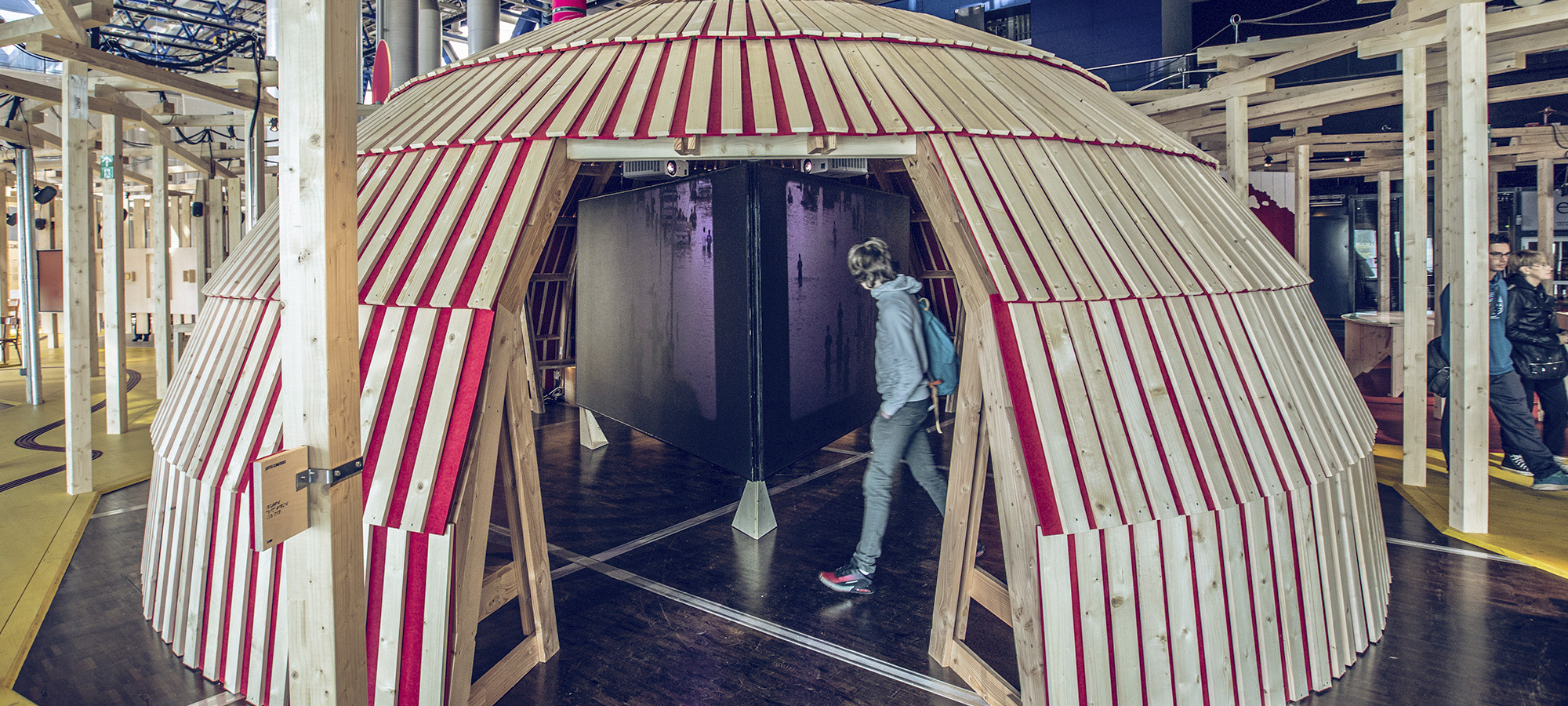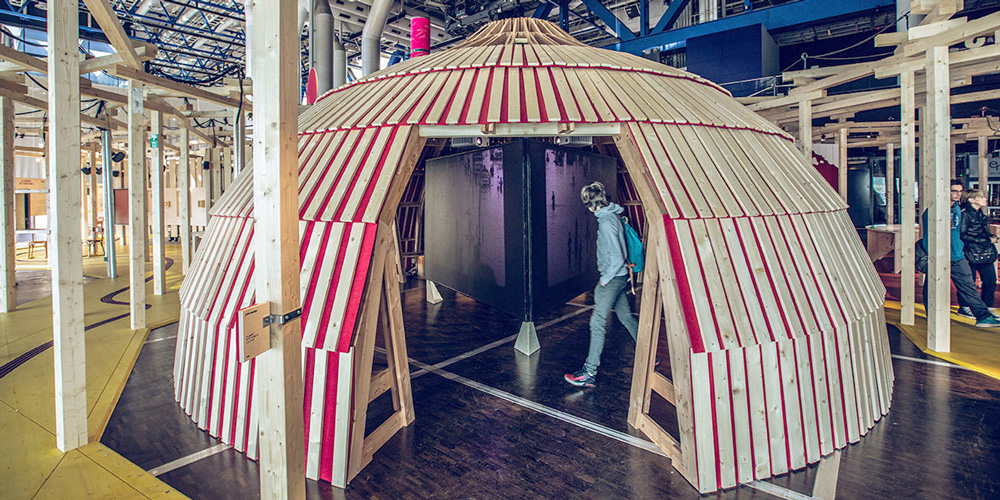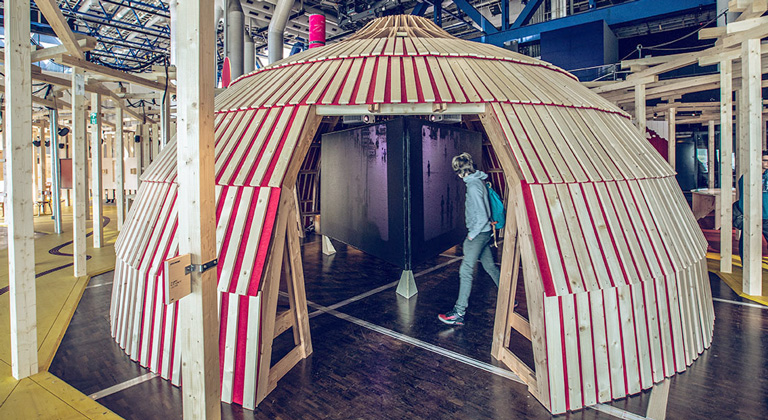Climate Emergency
Faced with climate change, humanity must think hard about its relationship to the world and engage collectively in profound transformations at every level of society in order to avert disaster.
Climate Emergency, the new permanent exhibition at the Cité des sciences et de l’industrie, provides us with an overview of the different mechanisms aiming to reconcile the decarbonisation of our societies and their adaptation.
Earth’s capacity to sustain life is now at stake. How can we deal with increasing disruptions to climates and systems across the world? What does this require in terms of political, economic and social reorganisation? Which civic initiatives and individual actions are needed?
Following a three-part sequence, the self-guided tour is a mix of display features, facts and interviews.
On a collective level, Climate Emergency demonstrates that the mechanisms governing our societies are no longer tenable and emphasises the necessity to trigger political and economic drivers for a move towards social and environmental justice. At an individual level, the exhibition is not intended to be patronising or defeating. It provides visitors with the world’s current state of play and suggests that solutions are within everyone’s reach.
All citizens have the means to act and adapt at their own individual level. The aim is not to say “what must be done” but rather to present “what is already being done”, through personal stories, accounts and experiences, since energy conservation is so vital to the fulfilment of the decarbonisation promise.
This first sequence focuses on three sectors that generate very high greenhouse gas emissions: cities, travel and food systems. A succession of data sculptures, hands-on features based on scenarios put forward by ADEME, and games reveal to the public the ways and means of achieving a decarbonised society. Three options are presented: moving towards cities that emit fewer GHGs and are better adapted, switching to sustainable mobility, and continuing to feed the world through a sustainable and decarbonised production system.
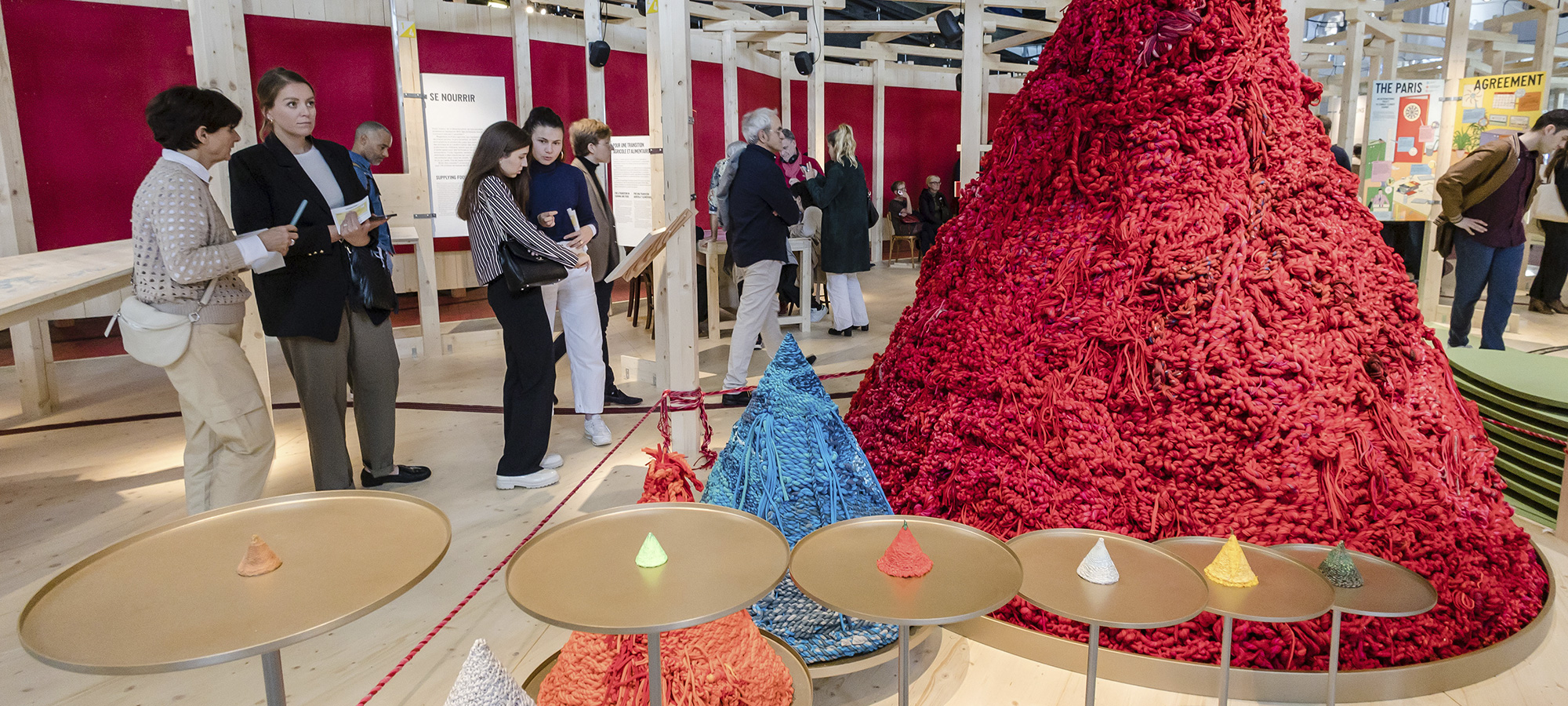
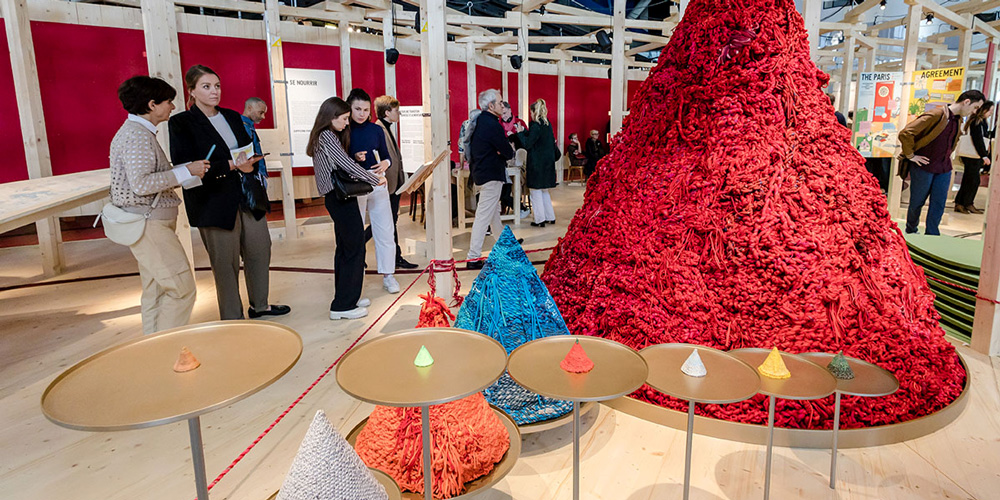
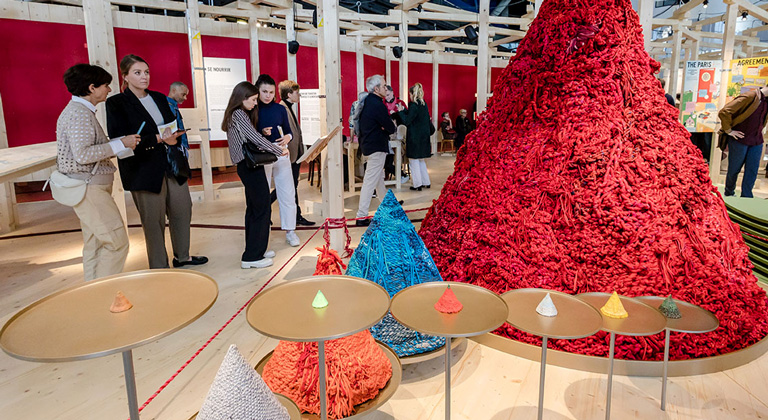
A first section sets the scope of the scientific information on current climate change caused by human-generated greenhouse gas emissions, using tangible phenomena to explain the mechanisms at work: greenhouse effect, biodiversity destruction, rising water levels...
The second section explores the massive exploitation of natural resources and our ever-increasing energy requirements. Next to it, the Data of the future visualisation feature offers visitors an immersive experience with a leap ahead in time. What are the forecasts for 2050? And 2100?
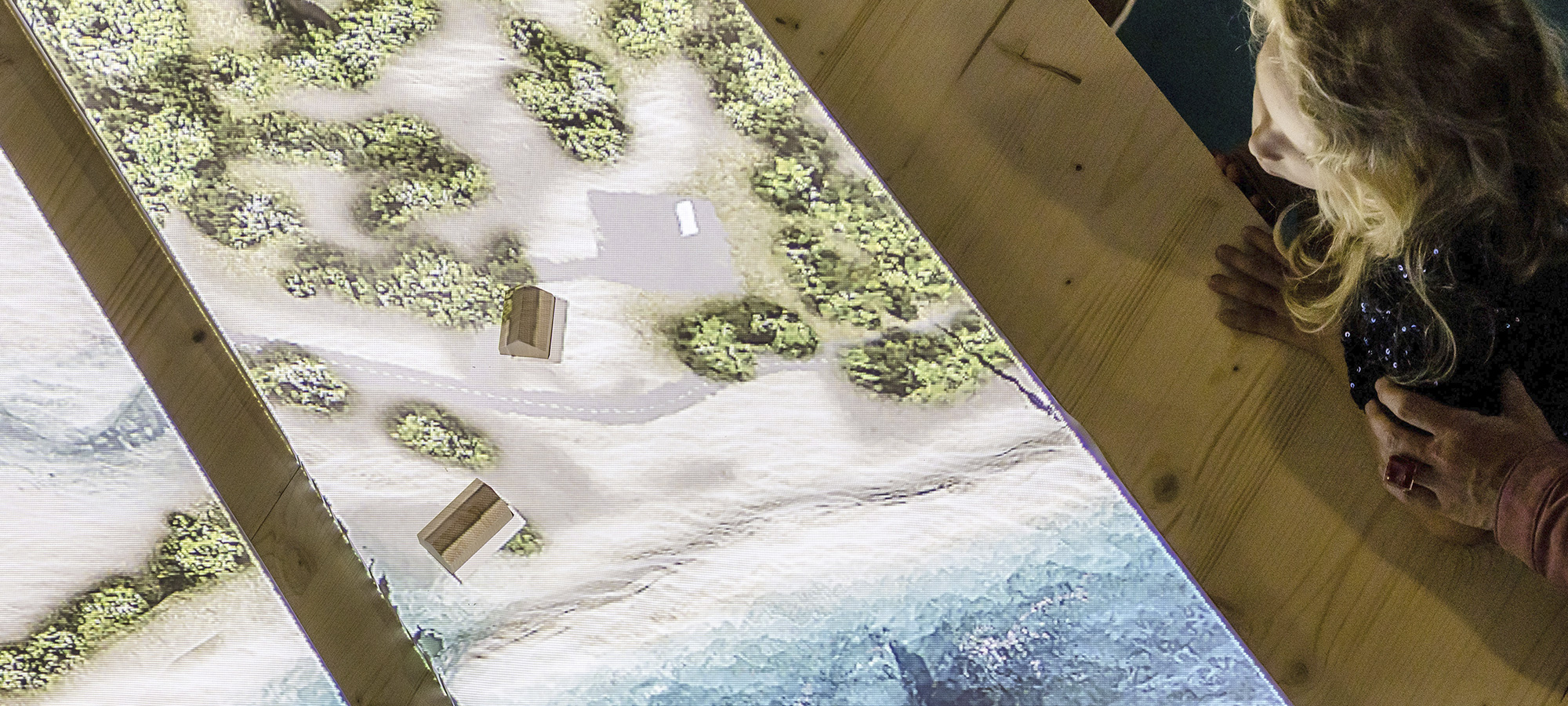
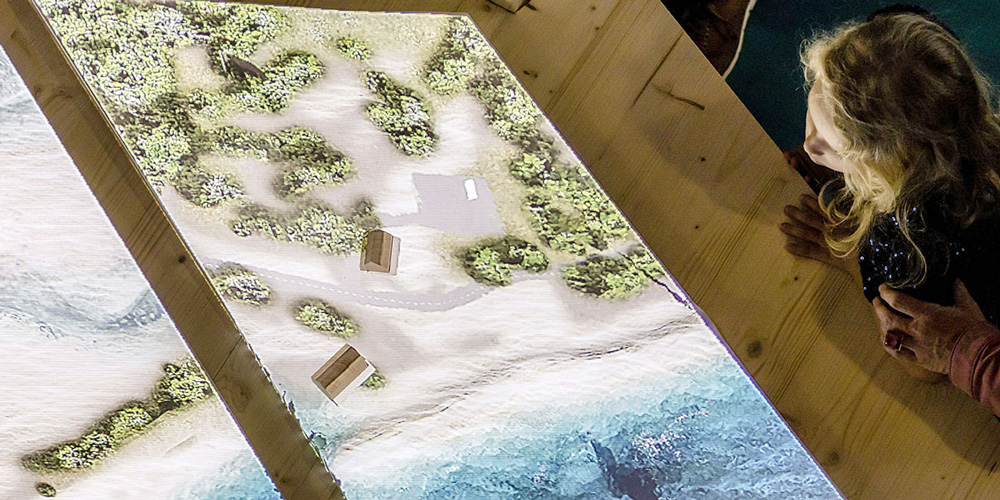
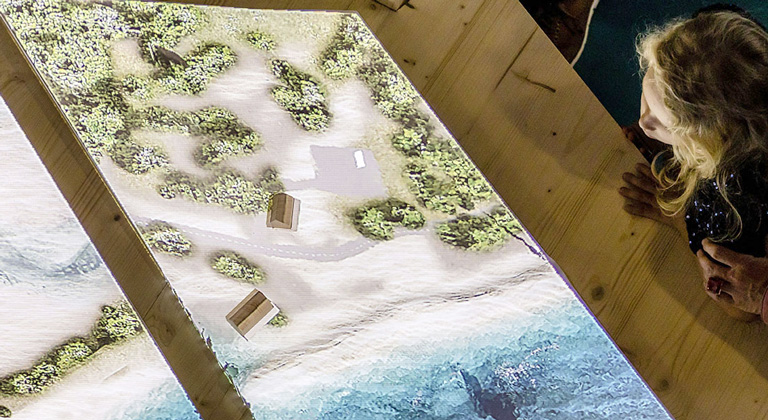
This final part of the exhibition shines a spotlight on the notions of collective action,
commitment and mobilisation. One feature allows us to calculate our carbon footprint. Further along, committed citizens give their accounts of how they became aware and what action they have taken.
The second part of this section presents the political aspect. What role do States and businesses play in the systemic transformation?
Last but not least, the visitor is invited to enter a hut to view a sensitive and stirring audio-visual sequence on the collective aspect, activism and engagement.
